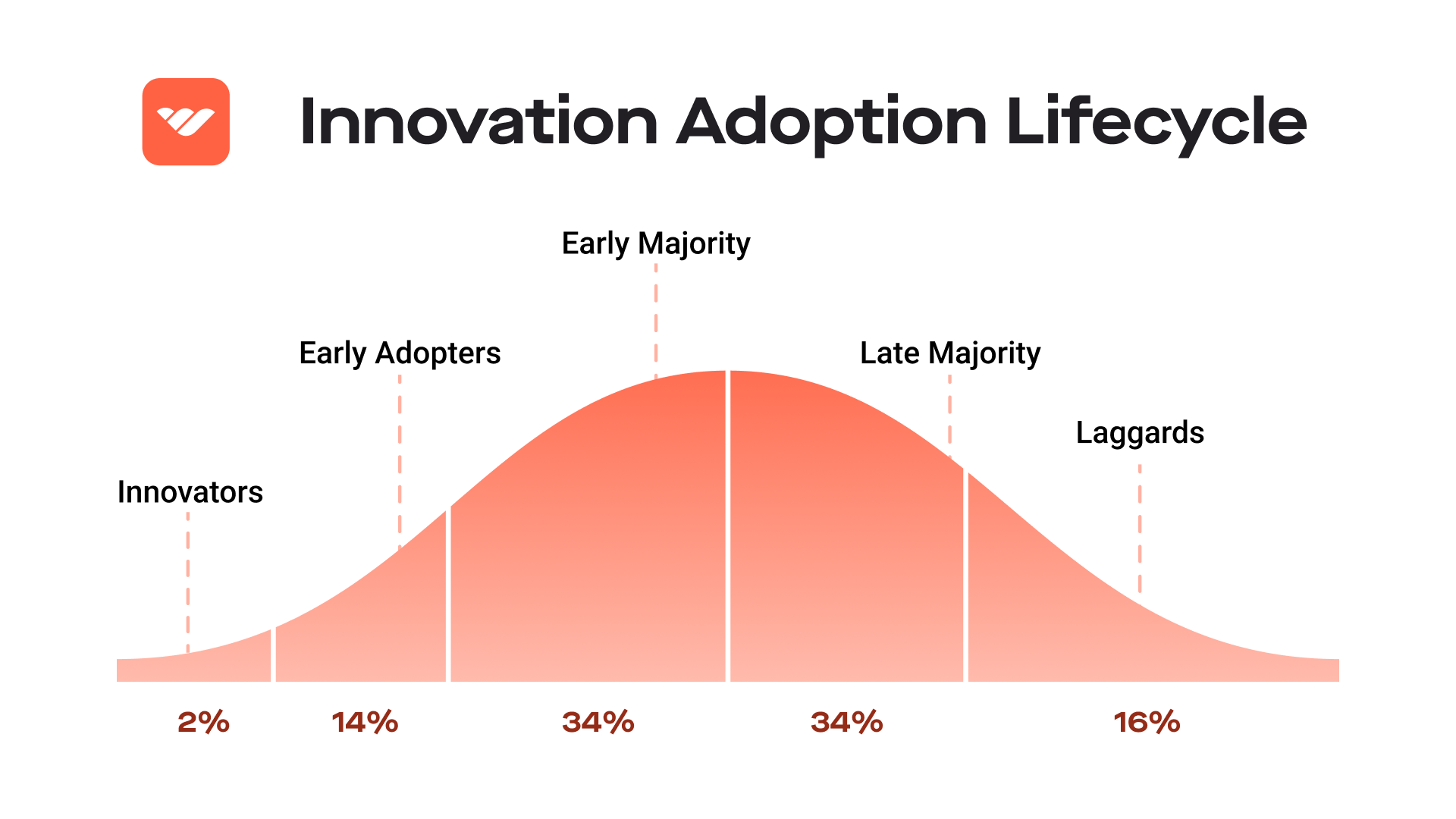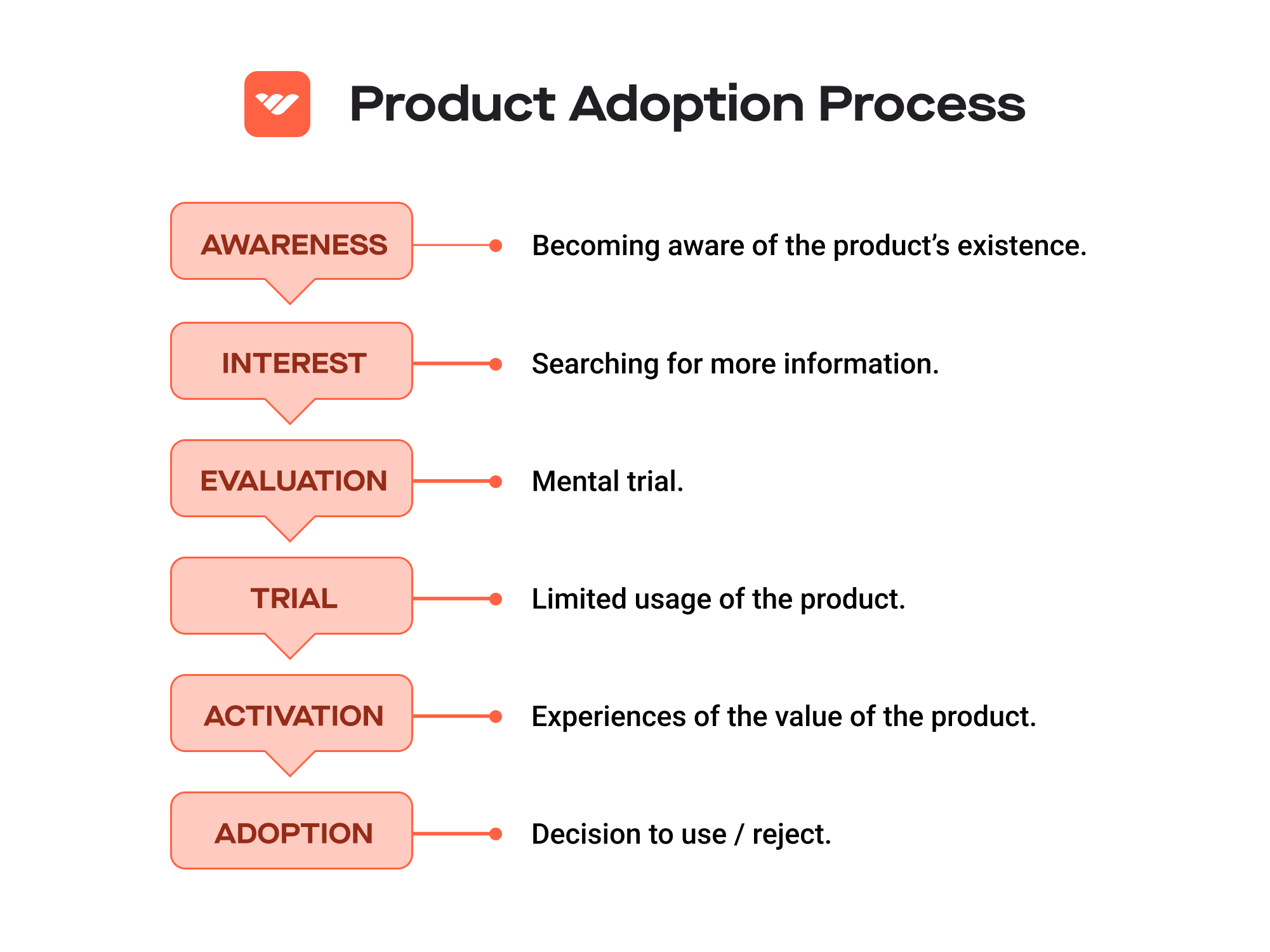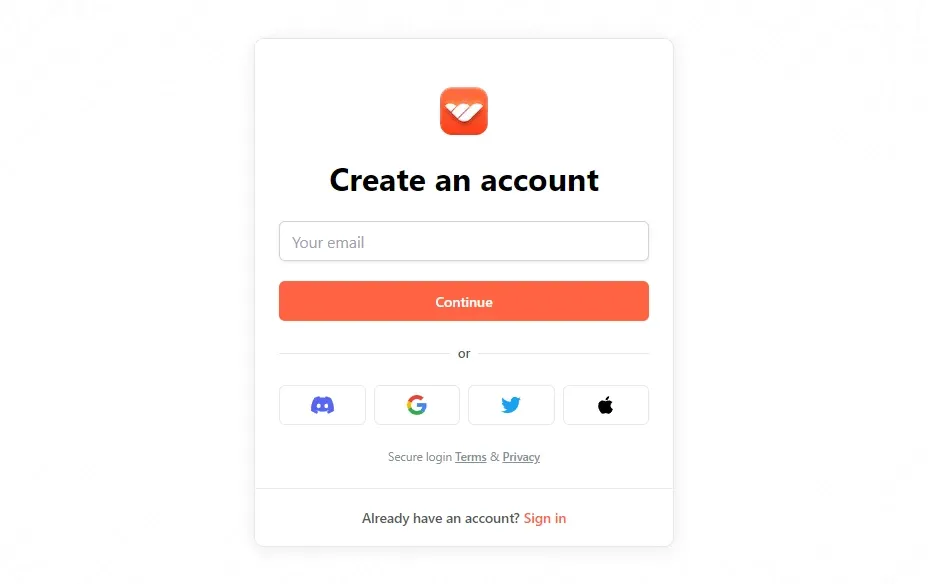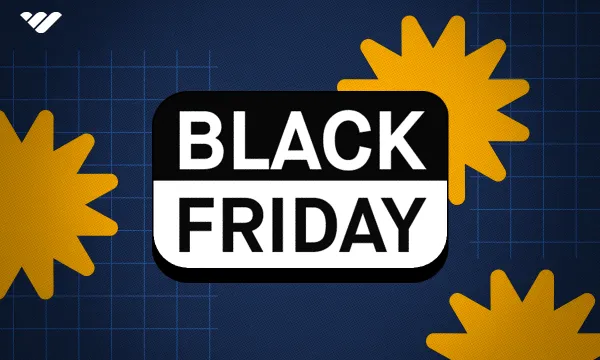Every SaaS company's holy grail? The AHA moment when a customer starts depending on your product in their daily life. Since we have a technical name for everything, we call this product adoption.
If your product can successfully solve your user's specific pain points, congratulations - you've got a winning product in your hands.
In this guide, we will explore what product adoption is, key product adoption metrics you should be tracking, and strategies on how to improve your product adoption initiatives.
What is Product Adoption?
Product adoption—or user adoption—is a process in which you get SaaS users to adopt your product. With product adoption, people learn about your product and start using it to achieve their goals. In other words, product adoption allows you to convert one-time users to loyal, long-term, and profitable customers.
Consider a project management tool that becomes indispensable for a team's daily operations – that's product adoption in action
Not to be confused with user acquisition, product adoption drives repeat business as customers keep coming back to the brand for more.
Why Does Product Adoption Matter?
Let's say you've got new customers at your brand's doorstep. Is acquiring new users enough? Certainly not. You need to not only acquire new customers but ensure that they adopt your product, continue to use it, and come back to your brand again and again.
Here's what the data tells us about acquiring new customers:
- Expensive: Acquiring a new customer is 6-7x more expensive than retaining an existing one.
- Profit: A mere 5% increase in customer retention can increase profits by 25%.
- Churn: PwC suggests 39% of Gen Z and 35% of millennials are willing to try new brands:
Driving seamless product adoption is important. You need to create a loyal and steady base of customers—ones who voluntarily use your product and will not go looking for alternatives.
Most SaaS businesses use a subscription revenue model. If customers don't find sustained value in your product, they will likely churn. So, with a solid product adoption strategy in place, SaaS companies can help users to:
- Learn more about their product/app
- Use the product/app to accomplish targeted goals
- Perform a set of predefined behaviors and get the most value out of the product
In return, SaaS organizations get a better understanding of the factors that influence user behavior (read: the push and pull of your SaaS product).
With this improved understanding, SaaS brands can boost retention, revenue, and growth.
Key Drivers of Successful Product Adoption
You may spend months or years developing your SaaS product, then be left deflated as you realise that after the initial sign-up period, people simply aren't using your product. Why is that? What could you do differently? Before we dive into the finer details of product adoption, let's take a look at the strategies that bring people to pick up your SaaS product.
Understand Your User Base
Your users are the most important aspect of your product - without them, your product does not have a purpose! So, you need to know and understand your customers needs. Ensure that your design, copy, marketing and onboarding is relevant to what the customer wants. You can use various tactics to analyze and measure this, from market research, to segmented users and product experience insight tools.
Create Efficient Onboarding
Have you ever downloaded an app only to offload it less than a day later due to an overcomplicated onboarding process? Don't let this happen with your customers. Onboarding is (usually) the first interaction that a customer has with your product, and you should aim to wow them here. Make it easy, personalized, and showcase your product's value from the get go.
Break Down Barriers
What's worse than a complicated onboarding process? A broken product. With so much technology readily available at our fingertips customers will quickly drop your product if they deem it too difficult to use. Make sure that your product is available on all browsers and devices, that is is easy for users to find solutions for their problems, and watch session recordings to see where you are losing users to identify any issues with the product design.
Test and Test Again
Thorough testing should always be a part of any product development, and this is amplified if your SaaS product has different user profiles. You will need to understand what works best for each of these profiles. Run A/B tests on your website and socials to pinpoint the copy and CTAs that are converting best. Also, use session recordings to get a better understanding of how users are moving around your product. This insight can be invaluable.
Using these above strategies can help you to drive product adoption. However, it is important to remember that this is not a straight road ahead, but rather a curve.
What is the Product Adoption Curve?
If you think that the new product adoption process is linear, think again. With product maturity, you'll be tasked with facing different customer segments who may have wildly different needs. And every segment will have its own product adoption process. Understanding these different product adoption phases can help your SaaS business to grow, as when the product marketing team understands your product adoption curve, they can create copy in line with this. Then, they can time and place that copy in a way that increases your product adoption and retention rate.
The product adoption curve can be broken down into five product adoption stages:

| Stage | Key Characteristics |
|---|---|
|
Stage 1 - Innovators |
|
|
Stage 2 - Early Adopters |
|
|
Stage 3 - Early Majority |
|
|
Stage 4 - Late Majority |
|
|
Stage 5 - Laggards |
|
Making the Most of Each Stage on the Product Adoption Curve
With five different stages of the product adoption curve you need to be prepared for each of them.
Innovators are extremely useful for your business as they are basically Beta testers. They don't care about achieving a specific task, but rather being the first to try out new features. So, use this group to gain essential product feedback! Create a two-way conversation and demonstrate that you're actively listening to their feedback and making changes.
Then, there are the early adopters. Unlike innovators, they have a real need for your product as it gives them a solution to their problem. As such, you can use this segment to understand what their 'aha' moment is, and see the point where and reason for churn.
The early majority is a tough customer segment to reach, and is your largest and most promising customer segment. They expect no lags, no bugs, and a product that has solutions for their pain points. Therefore, this segment is extremely valuable for understanding if your product features perform as well as expected.
Once you have made your way to the late majority you have a customer segment that already knows what your product does. To target this segment, switch your messaging to become more personalized and measure how the consumers react.
Finally, you come to the laggards! Now that you have successfully reached this final segment of those uncomfortable with technology and/or unwilling to change, you can make the most of this by considering how you can bring more innovation to your product and start the cycle all over again.
What are the Six Stages of Product Adoption?
We have covered the five points of the product adoption curve and each customer segment within those, but, each of these customers has their own individual product adoption journey. From the moment your potential customer is aware of your product to the moment they decide your SaaS product is useful for them, there are six stages that your user might go through:

Each stage is important from your marketing and product adoption perspectives. So, let's take a closer look at the six-step process.
Stage 1: The "Awareness" Stage
This is the moment when people first hear about your product. Needless to say, your goal should be to make potential customers aware of your product and how it can solve their problems.
Note: If your SaaS brand is well-known and you are rolling out a new feature, you can drive greater product adoption with word-of-mouth publicity. Capitalize on your brand's well-established reputation and drive product feature growth.
Stage 2: The "Interest" Stage
Once your potential customer's interest is piqued, know that you've entered the second stage. These users are no longer simply 'aware' of your product in a one-dimensional way. They want to know more about the nitty-gritty details like features, pricing, and customer support offered.
More importantly, they want to understand how your product fits into their daily lives and what specific problems it can solve for them.
Stage 3: The "Evaluation" Stage
In this stage, your customers are in full evaluation mode. They're weighing the pros and cons of not just your product but also your competitors.
Therefore, you need to be crystal clear about your product's strengths and how it outshines the competition. You must also make sure that the benefits far outweigh the perceived costs.
Stage 4: The "Trial" Stage
Once the potential customer has made up their mind, we're onto the "Trial" stage. At this point, your prospects are ready to give your product a try in the form of a free trial, a demo, a free sample, or even an initial purchase.
Remember, the user is basically taking your product for a spin. They are checking to see if the product can live up to its promises and fit seamlessly into their workflow.
Stage 5: The "Activation" Stage
We've added an extra step here, the "Activation" stage. It's the moment when users go from trying your product to realizing its value for the very first time.
It's crucial because before users can commit to something long-term, they need to experience the benefits. All in all, this stage is all about ensuring that your customers experience that 'wow' moment as quickly and easily as possible.
Stage 6: The "Adoption" Stage
Last but not least, we have the "Adoption" stage. At this point, your activated users need convincing that your product is worth their hard-earned dollars. Whether it's through paying for your SaaS product or renewing a subscription, this is the stage where you seal the deal.
Pro tip: Your product teams should focus on showcasing the consistent value users will receive. And while at it, they must make sure their customers know how to use the product effectively.
Think of it as the final push you need to make your product an integral part of your customer's daily operations—the ultimate goal for any SaaS brand.
Product Adoption Metrics You Must Track
With the product adoption curve and the product adoption process it is crucial that you track the metrics. Long-term product adoption metrics (read: retention, lifetime value, etc.) enable SaaS companies in multiple ways -
- One, they can deep-dive into the specific actions customers take to derive value from your product/app. In other words, you'll be able to map their action to your brand's retention and engagement initiatives.
- Two, it can help SaaS marketers to analyze the 'retained' customers that are active with the company for a significant period of time, making the results more trustworthy.
What are the Top 8 Product Adoption Metrics?
1. Time To First Value (TTFV): Measures how quickly users move from starting a trial to product activation.
2. Product Qualified Leads (PQLs): Refers to activated users who are ready for adoption but just need a gentle push to become die-hard customers.
3. Daily Active Users: Indicates the number of unique users who actively engage with your product on a daily basis and highlights how frequently your product is being used.
4. Customer Lifetime Value (CLV): Refers to how valuable (think: profitable) a customer is to your SaaS brand over their entire relationship with the company.
5. Feature Adoption Rate: Doubles up as a strong indicator of whether or not customers are deriving value from the multiple product features they are using.
6. NPS and CSAT: Gauges how satisfied your existing customers are with your product (and how likely they are to recommend it to others) via surveys.
7. Customer Engagement Score: Assigns scores to 'actions' that demonstrate users are finding greater value in your product (Examples of actions include referring a colleague, trying a demo, signing up, and so on).
The takeaway: Measuring your product adoption is key. Logic dictates that the higher your product adoption rate, the greater your customer base. And the more your repeat customers, the higher the chances of a product/feature being a success.
How to Measure Product Adoption?
Measuring product adoption is often a more non-linear process. You need to approach it from different angles to get a 360-degree view of the drivers behind seamless product adoption.
So, when measuring the product adoption rate, follow these tips:
- Categorize customers into three main segments - early majority, laggards, and late majority.
- Ask the right questions: Based on the segment identified, ask the following questions -
- Are your new customers (think: early adopters and innovators) using the newly launched product features?
- What kind of behavior are potential customers exhibiting that directly indicates higher product adoption?
- How often are existing customers buying from you, and how much are they spending throughout their lifecycle?
- Is your product adoption rate impacting your retention rate?
- Which acquisition channels in your marketing mix are showcasing the highest product adoption rate?
- Invest in a product analytics tool: Measuring your product adoption metrics requires you to track intangible elements (read: user behavior) and tangible elements (read: quantitative user retention data) collectively. This is where a product analytics solution can prove its money's worth.
- Rethink your product adoption metrics: Theoretically speaking, analyzing your product adoption metrics is all about understanding whether your product is doing what it was created to do. Sounds simple, right?
In reality, identifying when, how, and why a customer chooses to come back to your product can be tricky. For example, app downloads are one metric that organizations use to see if their product is a hit or a miss. However, this metric does not throw light on whether the customer is gaining any value when using the app.
So, here's a laundry list of metrics you can choose to track depending on how relevant it is for your product/app:
| Metric | Correlating User Behavior |
|---|---|
| 1. Conversion rate |
|
| 2. Time to value |
|
| 3. User onboarding |
|
| 4. Frequency of use/purchase |
|
Pro tip💡: Think about combining the results from different metrics to extract user behavior patterns. You can then map it to the cohort with the highest retention rates and get real answers on whether your customers are able to extract meaningful value from the product.
Use-case: Whop is a marketplace for digital products.
Whop allows you to sell a web app, software project, course, file, etc. Plus, it can help you to distribute, manage, and grow your business online:

When a new user/customer signs up on Whop, they can:
- Become an affiliate
- Start selling online
- Track their order
- Read the blogs section
- Earn when someone buys a product with the user's affiliate link
Now, each of these actions can be thought of as product adoption.
So, you need to keep tabs on which actions users are taking and how many times to understand the correlation between product adoption behavior, retention, and LTV.
What to Look for When Investing in a Product Analytics Tool?
With thousands of product analytics tool options, choosing the right one can be overwhelming.
Instead, look for the following 'must-have' features and make the process of choosing easier:
- Automatic event tracking: This feature will allow you to track all customer behaviors that are likely to drive product adoption.
- Reporting and insights: The tool should provide you with accurate and insightful reports on product adoption metrics, customer preferences related to your product, areas of improvement within your offering, and so on.
- Session replays: This feature allows you to view which specific actions users took to drive product adoption. With this data, you can redefine your events, build customer funnels, understand moments of friction in the user experience, etc.
- Integration: The tool must seamlessly integrate with your existing workflows and processes. You don't want to keep switching between different tabs and tools and waste valuable time to get a complete picture of your product adoption data.
Enhance Your Product Adoption With Whop
You could have the best product in the world. You could even have thousands of users flooding your digital doorstep. But if your customers don't end up using your product frequently, all your product innovation efforts will be for nothing.
This is why you need to use a product analytics tool.
When you start selling with Whop you gain access to all the tools that you need to help grow and manage your business. From metrics such as customer retention rate, to acting as your Merchant of Record for payment processing, a 24/7 support team easy integrations, Whop has everything you need to drive your SaaS product adoption.
📚 Read next: Product Adoption Metrics Your Business Should be Tracking





